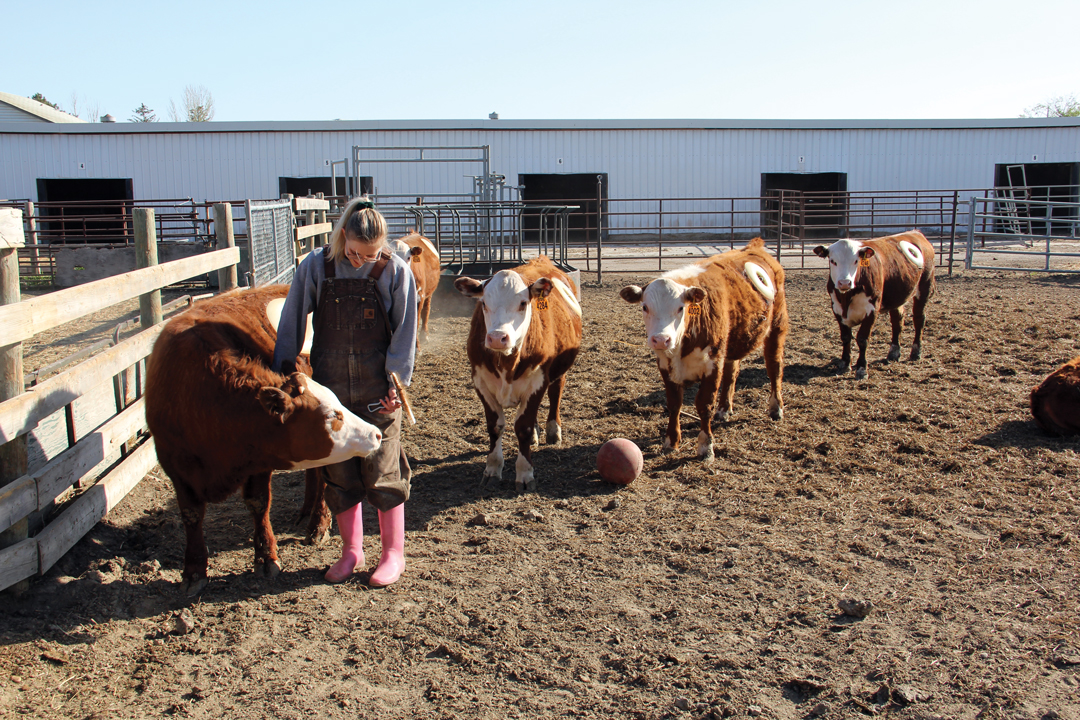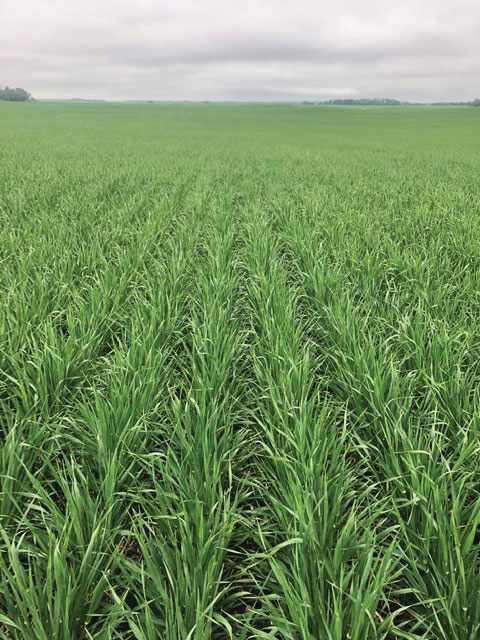JUST ADD WATER
BY TRUDY KELLY FORSYTHE • PHOTO COURTESY OF USASK
Catherine Seidle developed a keen interest in the livestock and crop industries while growing up on a mixed farm near Saskatoon, SK. She studied animal science at the University of Saskatchewan (USask) and went on to become a livestock and feed extension specialist with the Saskatchewan Ministry of Agriculture. Now on a two-year sabbatical to complete a master’s project on ruminant nutrition, she works with Greg Penner, a USask professor and Centennial Enhancement Chair in ruminant nutritional physiology. She has joined Penner in his development of feed barley strategies that deal in part with variability of kernel size.
Variable kernel size causes problems when barley is processed for animal feed. When dry rolled, larger kernels can be crushed too finely, which creates fine starchy particles. When digested by cattle, a concentration of such particles ferments too quickly in the rumen and may cause acidosis, a drop in pH that causes excessive acid production in the rumen. This, in turn, is linked to further metabolic problems such as laminitis and liver abscesses that affect animal performance.
On the flip side, smaller kernels may pass through the roller mill whole. With their hard outer shells intact, they pass through the cow undigested. “Barley grain is a really expensive feed ingredient, and we can’t afford for that starch to remain in the feces,” she said.
Seidle has worked on two projects she hopes will address kernel size variability and that will reduce fecal starch output and improve cattle digestion, growth and efficiency. The first was a metabolism study conducted from May to August at the USask Livestock Research Barn. Processing the grain so that all kernels cracked, varying amounts of water were then added to the feed. The team then measured the digestibility and fermentation rates of the mixtures.
As the uniform cracking causes greater production of those fine starchy particles, Seidle predicted the water would allow them to adhere to the larger barley silage particles. This proved to be the case. When the feed was mixed with a high amount of water, cattle stopped their feed sorting, a behaviour in which cattle selectively eat portions of the feed while leaving a component behind, typically the fine starch.
“When we looked internally at indicators of fermentation, there was no change in short-chain fatty acids among treatments” said Seidle. “So, we can pretty confidently say that it didn’t change how fermentation was happening, but that we were able to prevent sorting, resulting in lower pH as more water was added.”
To provide followup on these findings, the next step was to launch a feedlot study. This began late in 2023 at the Lacombe Research and Development Centre. The project assesses animal performance in a pen with the measurement of average daily gains, feed-to-gain ratios, animal growth and carcass quality.
Seidle hopes feedlots will routinely add water to their feed barley rations in the future. She believes they will see better gains with existing regimens or may achieve similar results while feeding cattle less barley.
The project is funded by SaskBarley and the Natural Sciences and Engineering Research Council of Canada.







Comments